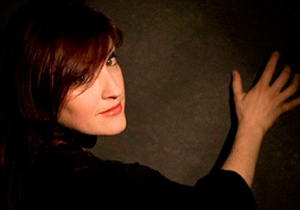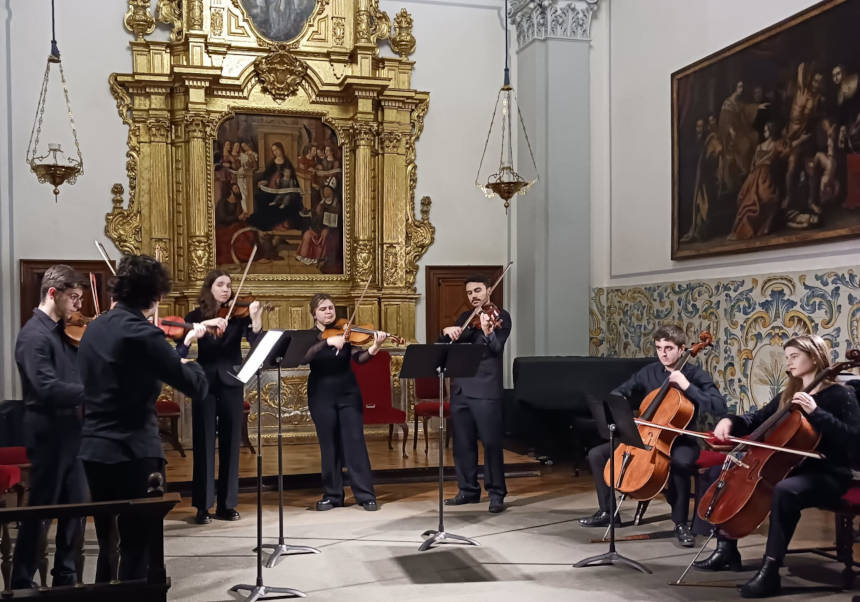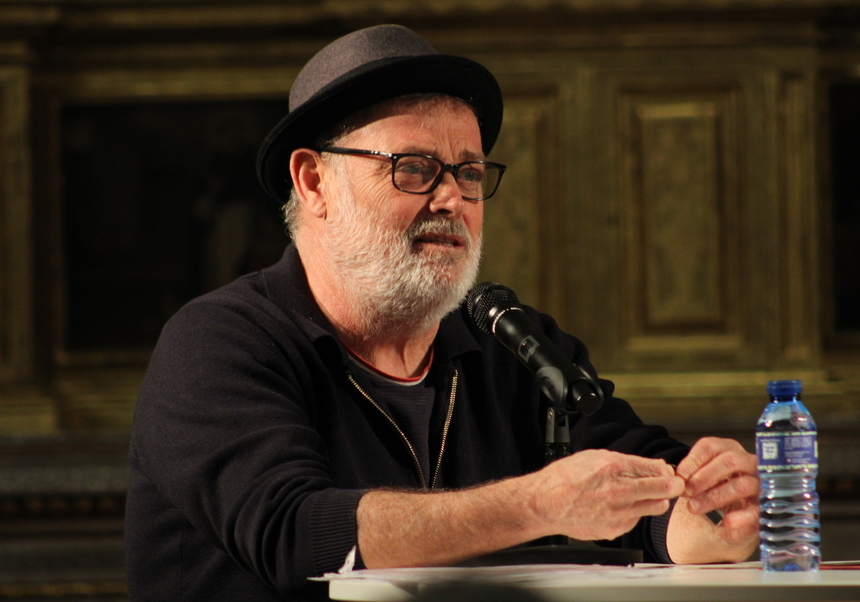Today Estil Concertant with the soprano Isabel Monar, will hold a concert titled ‘W.A. Mozart & V. Martín i Soler, vidas paralelas’ (“W.A. Mozart & V. Martín i Soler, parallel lives”)
- July 1st, 2016

Estil Concertant, a formation composed of Isabel Monar, a soprano;Sylvia Márquez , “fortepiano”, will hold a concert today as a part of Serenates 2016. The concert is titled ‘W.A. Mozart & V. Martín i Soler, vidas paralelas’ (“W.A. Mozart & V. Martín i Soler, parallel lives”) in which various pieces and arias by the two composers will be performed. The event starts at 22.30 pm in the cloister of La Nau.
In order to get to know the work of Martín i Soler, one has to avoid comparing it with the complexity of Mozart and to consider it on its own terms. The simple, Valnecian style was a concious decision, guided by common sense, and it made the audiences in Vienna and London consider it one of the best composers of the times.
The parallel life of the two composers shows a reseblence of characters and stage. Mozart was born in Salzburg in 1756 and Soler in Valencia in 1754. Established in Vienna in the middle of the 1780s, they shared a friendship with the librettist Lorenzo da Ponte and both worked for the same patrons. The texts of Italian songs in the works of Martín i Soler were written by De Lorenzo da Ponte.
The few published works of Martín i Soler haven´t allowed one to get familiar with his instrumental style, but he was quite known in his time for composing ballets and operas. With the jocular drama “Una cosa rara” (“A strange thing”) he had great succes: the opera transformed the city. The arrite, the hairstyles, the watch chains and the fans reflected the work and some of its arias ended up being popular songs. It had its debut in Vienna in 1786 and it was enacted on almost all important European stages. The melody “‘O quanto un si bel giubilo” sung by the Queen of Spain in “A strange thing” was included by Mozart as a piece of a concert in his opera “Don Giovanni”.
In “Il sogno”, a cantata which forms a part of the programme, also with a text by Da Ponte, the action takes place in a forest of Arcadia where the nymph called Nice has a dream about falling in love, something which was prohibited - a plot which reflects the spirit of the changing world.
The Singspiel “The Magic Flute” the fragments of which are performed in the programme, were Mozart´s last show, as he died when it was still being preformed. Many studies have shown evidence of the similarities between “L´abore” by Martín i Soler and “The Magic Flute”, which was produced four years earlier. The points of resemblence are Diana and her nymphs, The Queen of the Night and her three ladies, as well as the rebellion of the heroine, the three geniuses and the punishment of muteness. Perhaps, however, Mozart´s musical approach is more complex and polyphonic than the charming melodies of Martín i Soler´s.
Estil Concertant, a musical ensemble created by Marisa Esperanza in 1988, performs in different formations works of the most international authors of European Baroque and Classical music, focusing especially on Spanish composers from the XVIII century, with the use of the instruments of the epoch and reflecting the character of the age.
The soprano, Isabel Monar, Ana Luisa Chova´s student received an award at the end of her studies (premio extraordinario final de carrera) and had her debut in Valencia´s Teatro Prinipal. Her successin various shows like interpreting Don Giovanni´s Donna Anna (Valencia), Susanna de Le nozze di Figaro (Opera of Marseille, Stadttheater de Berna); her success in Il buon marito (festival Schwetzingen) Orfeu ed Eurídice (Edimburgo) or in the inaugural concert at the City of Arts and Sciences, prove the solidity of the uphill trajectory of this singer´s career.
The tickets to the show can be bought online: http://www.latenda.es/entrades
Informational about the show can be found here: http://links.uv.es/373Vwd5
The programme of the festival continues
The protagonist of the 2nd of July will be a young chorister, Leioa Kantika Korala from Basque Country, under the direction of Basilio Astulez, one of the most important figures of musical pedagogy in Spain.
On 3 July, Orfeó Universitari de València, will present for the first time “Ad urbe condita” by Ramon Pastor and “Eroticitats” by Pau de Luis; both are natives of Valencia and have been resident composers of the grouping in 2015 and 2016, respectively.
On the 3rd of July, Orfeó Universitari de València, will present for the first time “Ad urbe condita” by Ramon Pastor and “Eroticitats” by Pau de Luis; both are natives of Valencia and have been resident composers of the ensemble in 2015 and 2016, respectively.
On the 4th of July, the Generalitat Valenciana chorus, directed by Francesc Perales, will present the programme “Poesia al cor: del Tirant a la generació del 27” with love poems set to music.
On 6 July, the Valencia Orchestra will give a charity concert in which the participation of young musicians will be key. This concert is co-produced by Palau de la Música and is under the general direction of José Sanchís.
On the 7th of July, Colectivo Mortero, formed by Paula Miralles, Esther Vidal and Pilar Parreño, will put on a show called “La pell possible”. It is an interdisciplinary project of music, poetry, theatre and art which joins voices of poets such as Ausiàs March, Vicent Andrés Estellés, Marc Granell, Manuel Asensi, Begonya Pozo and Lola Andrés. This concert is co-produced with Acadèmia Valenciana de la Llengua (AVL).
Starting on the 8 July, there will be concerts dedicated to “Música popular i les Serenates” the setting of which will be different: they will take place at Patriarca Square. These concert are performed as part of the “July Festival” organized by the Valencia city council.
In the first of two concerts, on the 8th of July, the two main performers will be los Tornejants and la Muixeranga de Algemesí. The show of music and dance will take place in the cloister of La Nau and will move toward the square, where it will finish. La Muixeranga was declared by UNESCO to be Cultural Heritage of Humanity in 2011, and it is considered to be the best way to connect “Serenate” to its popular culture characteristics.
On 9 July, Urbàlia Rurana and Romántica del Saladar will perform in concert called “La vespra i la festa”. Two of Valencia’s most emblematic bands come together to play all possible styles in the eve of the town celebrations: pasacalles, waltzes, jotas, pasadobles, folk dances and various kinds of folk songs.
On 10 July, la Joven Banda Sinfónica de la Federación de Sociedades Musicales de la Comunitat Valenciana (FSMCV), under the direction of Pablo Marcara, joins the singer Pep el Botifarra in the concert “Botifarra a banda” with arrangements for voice and folk music.
The festival ‘Serenates’ has being taken place since 1984 coproduced by the Universitat de València and the Musical Sub-Division of CulturArts. It has counted on the collaboration of Valencian City Hall, the Acadèmia Valenciana de la Llengua, the Higher Education College of Art and Design of Valencia, Bancaja Foundation, Banco Sabadell Foundation and Heineken Spain.
What is new about 2016 edition is the co-production of ‘Serenates’ with the ‘Feria de Julio’ [July Fair] (thanks to the collaboration with the Festival and Popular Culture Department of Valencia City) consisting of three concerts of a popular nature taking place in Patriarca Square (between the 8th and the 10th July).
File in: Música , Festival Serenates















